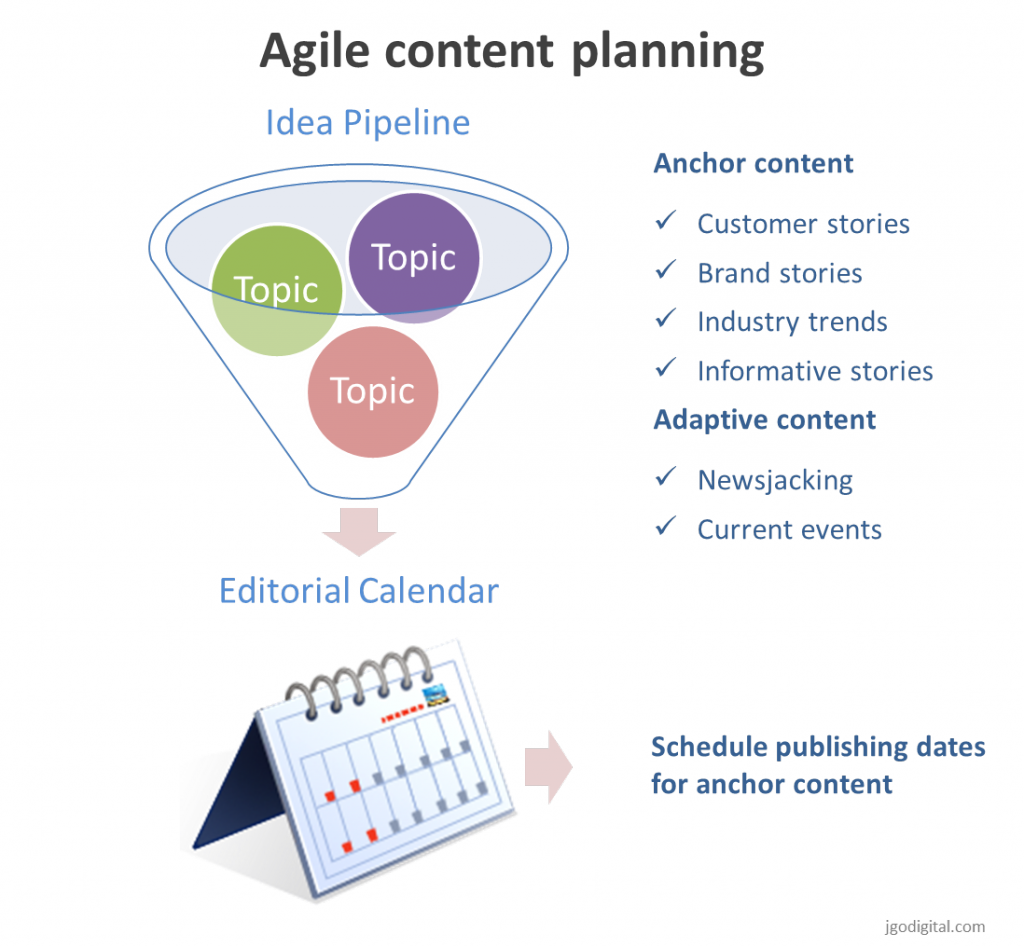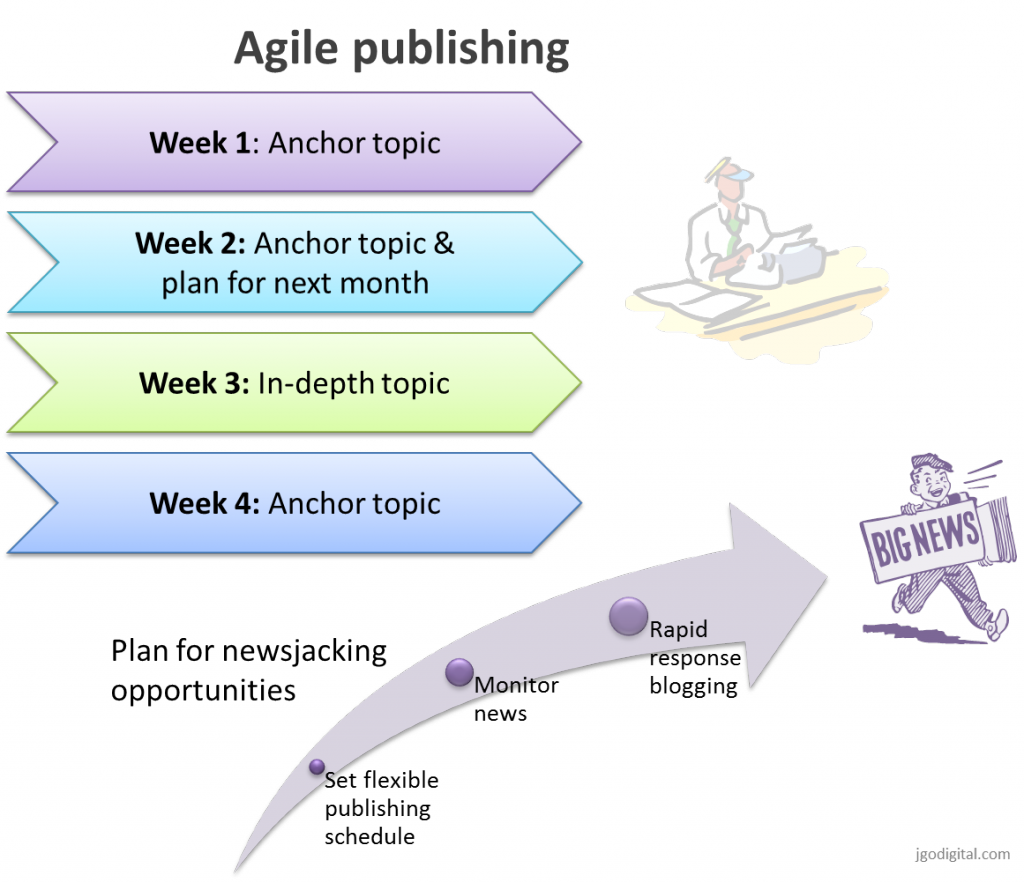It’s a common scenario for many companies.
Someone reads the latest statistics on the success others are having with business blogging. Maybe it’s the Hubspot report that says businesses that blog 3-5 times a month have twice the Web traffic and inbound leads of companies that don’t. Getting in on that action seems like a no-brainer.
Twelve months later they succumb to dead blog syndrome.
Yeah, it’s real. Passel.net defines dead blogs as those that are updated less than four times a year. Statistics from their research offer a dose of reality for business bloggers. Last year’s study found:
- 71% of them were unable to update their blog twelve times a year
- 70% of business bloggers in the U.S. were unable to update their blog three times a year
Those frequency rates in the survey set the bar low for business blogging. Yet many companies sputter and stall. Why?
The survey found the three most common challenges businesses face with keeping their blog alive are time, resources and ideas. Here’s what the numbers say:
- 27% of business bloggers don’t have enough time to blog
- 19% said no one else helped with writing blog posts
- 19% also said they ran out of ideas to blog about
And so begins a slow, steady spiral into dead blog syndrome. It doesn’t have to be your fate.
With a little content planning, you can create an editorial calendar that reduces the time needed to write posts, and generates plenty of topic ideas for your blog. The planning process I’m talking about comes from an unlikely source.
How IT could save your business blog from certain death
Some content marketers have discovered a useful approach to editorial planning based on a method of project management used by our friends in the IT world. And, as marketers do, they’ve given it a name you can add to your buzzword bingo card: agile marketing.
The agile movement first emerged as a software development method based on iterative and incremental development and characterized by a time-boxed approach, rapid response to change and adaptive planning. Marketers like this approach because it makes creating content for business blogs easier and more manageable. It’s agile.
Five agile principles that apply directly to business blogging are:
- To satisfy the customer/audience through early and continuous delivery of value
- To harness change for competitive advantage
- To deliver frequently in shorter time frames
- To simplify complex ideas
- To maintain a constant pace indefinitely
All of these things help to serve up content your customers need, want and desire. The process is adaptive, which is exactly what blog publishers need for coming up with content ideas on the fly. In many ways, it follows the news publishing model of magazines, newspapers and television.
I used this model years ago as a business newsletter publisher. We set the editorial calendar for two to three issues out, working on regular feature stories well in advance of publishing and allowing time for current, event-driven stories as they developed.
The difference today is that everything on the Web moves faster. An agile editorial planning process enables you to combine anchor content with adaptive content to deliver relevant stories to blog readers consistently, and in real time.
Why agile bloggers make better storytellers
How can you make an agile process work for your business blog? For starters, look at the use of user stories by agile developers. They create user stories to define specific requirements for the end user to experience value.
A user story is broken down into a simple statement where you fill in the blanks: As a [describe user role], I want to [describe outcome]. For example:
As a [shopper], I want to [search for sneakers by color].
User stories break down a complex idea into its simplest utility for the end user. Substitute ‘blog reader’ for ‘end user’ and you have a formula for blog topics that tell better brand stories.
Another way to make agile content planning work for business blogging is the ability to develop topics more frequently in shorter time frames. An agile editorial plan uses a blend of anchor content and adaptive content. Here is how it works in combination.
Anchor content
Your anchor content is evergreen or feature stories that are not time sensitive. They include topics such as:
- Customer stories/case studies about problems and solutions
- Brand stories that reinforce your value proposition
- Industry trends – technology, regulatory, economic
- Instructional content – customer help via your thought leadership
- Diagnostic content – customer help via checklists, etc.
- Interviews/reviews – introduce industry leaders
Adaptive content
In contrast, topics tied to real time events that require rapid response make up your adaptive content. Having anchor content in the works or ‘on the shelf’ frees up resources for you to respond to trending topics or newsjacking opportunities.
Newsjacking capitalizes on a popular news story to promote your brand or cause. You build this into your editorial calendar by:
- Monitoring newsfeeds and social media for breaking news related to your industry and topics
- Checking keyword search volume for the stories to gauge popularity
- Responding quickly. The ideal time to publish is in the widow between when the story breaks and when journalists are seeking more information on it.
- Differentiating. Relate your brand to the news by offering solutions or new information.
6 steps for pumping life into your blog strategy
How can you best manage your time and resources to keep your blog alive and thriving? Here are six steps for running an agile business blog calendar:
- Develop a pipeline of story ideas: timeless and potential breaking news items
- Establish an achievable publishing schedule and timeline 30-60 days out
- Plan for one larger post per month requiring more research and development, working concurrently with other projects
- Be ready to respond to newsjacking opportunities
- Optimize and improve content based on feedback (comments, social shares, traffic data)
- Adaptive planning: evolve the editorial calendar on the fly and month-to-month
A cure for what ails business blogging productivity
An agile editorial calendar and content planning process could be your cure for dead blog syndrome. It increases the productivity of time and resources that can suck the life out of your blogging activities. And it enables you to generate more content ideas your audience will value.
You still have work to do. But thanks to your friends from IT, it will be better focused and more productive. Help stamp out dead blog syndrome at your company. Get agile.














Speak Your Mind